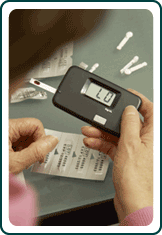Conditions That Increase Risk for High Blood Pressure

Some medical conditions can raise your risk for high blood pressure. If you have one of these conditions, you can take steps to control it and lower your risk.
Prehypertension
Prehypertension is blood pressure that is slightly higher than normal. Prehypertension increases the risk that you will develop chronic, or long-lasting, high blood pressure in the future.
If your blood pressure is between 120/80 mmHg and 139/89 mmHg, you have prehypertension. Learn more about how blood pressure is measured.
You can take steps to control your blood pressure and keep it in a healthy range.
| Blood Pressure Levels | |
|---|---|
| Normal | Systolic: less than 120 mmHg Diastolic: less than 80 mmHg |
| At Risk (Prehypertension) | Systolic: 120–139 mmHg Diastolic: 80–89 mmHg |
| High | Systolic: 140 mmHg or higher Diastolic: 90 mmHg or higher |
Diabetes
Diabetes mellitus also increases the risk for heart disease. Your body needs glucose (sugar) for energy. Insulin is a hormone made in the pancreas that helps move glucose from the food you eat to your body’s cells. If you have diabetes, your body does not make enough insulin, can not use its own insulin as well as it should, or both. This will increase the blood sugar.
Diabetes causes sugars to build up in the blood. About 60% of people who have diabetes also have high blood pressure.1 Talk to your doctor about ways to manage diabetes and control other risk factors.
Reference
- National High Blood Pressure Education Program. The Seventh Report of the Joint National Committee on Prevention, Detection, Evaluation, and Treatment of High Blood Pressure [PDF - 223K]. Bethesda, MD: National Heart, Lung, and Blood Institute; 2003.
- Page last reviewed: July 7, 2014
- Page last updated: July 7, 2014
- Content source:



 ShareCompartir
ShareCompartir